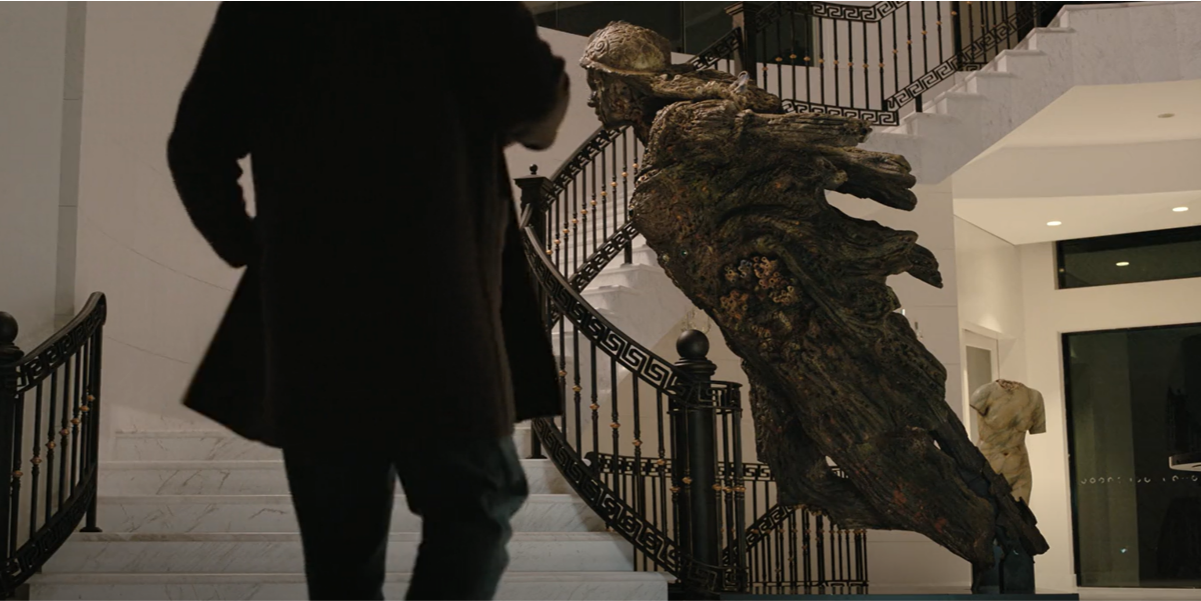Helmed by Shane Black, Prime Video’s ‘Play Dirty’ tells the story of Parker, an infamous thief who comes face-to-face with the biggest heist opportunity of his life. Together with his crew of expert thieves, each with their own specialized skill sets, the protagonist designs an elaborate plan with multiple layers within. However, his ambitions are not without competition, and as many players from his past make their return, Parker is forced to adjust and adapt to the changing tides and figure out more ingenious ways to make his heist a success. At the heart of this action thriller, adapted from the “Parker” book series by Donald E. Westlake, lies the Lady of Arintero, which is the name of both a sunken ship and the statue carved into its bow. As a cultural icon, the statue gains many shades over the course of the narrative, with its unique history informing the motivations of many characters on board.
The Lady of Arintero Ship is Fictional, But Likely Inspired by Real-Life Shipwrecks
The Lady of Arintero ship is a fictional construct created by the writing team of ‘Play Dirty,’ including Shane Black, Chuck Mondry, and Anthony Bagarozzi, solely to serve the narrative. As a rare archeological marvel, the ship becomes the springboard for a geopolitical maneuver, with many influential figures hoping to cash in on its valuation: a whopping 500 million dollars. In real life, sunken ships containing treasures are not uncommon, and many famous statues discovered in the ocean might have served as a reference point for the Lady of Arintero statue found in the movie. Most notably, a 2024 expedition to the shipwreck of the famous RMS Titanic, which led to the discovery of the lost statue known as Diana of Versailles, might have been a source of inspiration. However, given that this bronze statue is a replica of the original sculpture located at the Louvre Museum in Paris, its similarity to the Lady of Arintero statue is largely superficial in nature.

Alongside Diane of Versailles, a number of statues discovered amidst the remains of sunken ships stand out as a potential basis for their fictional counterpart. One such statue is The Philosopher, which was recovered in 1901 from a Roman-era shipwreck known as the Antikythera wreck. However, the difference in the details of the sculptures, coupled with the historical significance of the Lady of Arintero within the narrative, reiterates that the latter is a fictional creation. As such, it is more likely that the idea of a statue being recovered from a sunken ship became the primary draw for the creative team, with no one work in particular inspiring the plot of the movie. The ship’s use as a political tool also doubles as a commentary on how corrupt systems can often toy with cultural and historical landmarks so long as they serve their nefarious purposes.
The Lady of Arintero Ship is Informed by a Popular Legend
Notably, while the statue and the ship might not have a direct connection to reality, the Lady of Arintero herself is a figure partially based in real life, and the subject of a famous Spanish and Catalonian legend regarding Juana de Trastámara. As the story goes, Juana was the daughter of King Enrique IV, who controlled the province of León. His death triggered a succession conquest, commonly known as the Castilian War of Succession, which was contested from 1475 to 1479, and Juana decided to step onto the battlefield herself. The unique detail about this story lies in Juana concealing the fact that she is a woman by cutting off her long hair and wearing a gear specifically designed to make her gender ambiguous. Eventually, however, the legend claims that Juana’s secret was ultimately discovered, and the news made it all the way to the ears of King Fernand II. Impressed by her courage, the king rewarded her with numerous privileges.

‘Play Dirty’ adds its own spin to the tale of the Lady of Arintero, dramatizing it further as the thematic key to the story. Zen, one of the thieves working with Parker, draws her motivations from the statue and what it represents, stating that she has been moved by this story since her childhood. On the other hand, the antagonistic figures of the story, such as the dictator, De La Paz, along with Phineas Paul, a billionaire, both have their own selfish interests regarding the statue. As such, the statue serves as a reflection of society and how legends often outlive their initial renditions to take on a new shape with every passing generation.
Read More: Is She Said Maybe a True Story? Are the Bilgins a Real Turkish Family?


